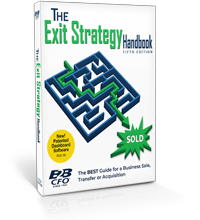BtoB Online
By: Reid Carr & Grant Brisacher

CMOs have long wrestled with their colleagues in the C-suite for the budget they get to fund their promotion and customer relationship initiatives, and it won’t get any easier for some time. A challenging economic period combined with a pervasive degree of uncertainly about the future will mean every dollar spent must be accounted for properly.
The logical move by CMOs is to seek additional capital from less than traditional sources, such as through partner affiliation or vendor accountability. However, one place that is often overlooked is within their own spreadsheets. What they may find is certain portions of their budgets should be on another department’s books.
In “finance speak,” there are essentially two different “colors” of money—one classified as operating expenses and the other identified as capital expenses.
Operating expenses are the cost of doing business, such as office rent, utilities, supplies, insurance, software, promotions, advertising and professional fees. Capital expenses are newly purchased fixed assets or investments that, while not used for ordinary operations, improve the life of an existing infrastructure and overall productivity. Normally, these include things such as office equipment, computers, ERP systems, leasehold improvements, building purchases and repairs, and equipment.
Unlike operating expenses, the costs of capital expenses are not taken all at once but spread over the useful life of the asset, otherwise known as depreciation. This approach adds an asset to a company’s books while influencing taxes. Taking this deduction into consideration can offset out-of-pocket expense.
Marketers should take note here: Some of their operating expenses could actually be considered as capital expenses and recognized by the company for the assets they are.
Building signage is one obvious choice, but so, too, are some digital properties, such as the company website, social media pages and related maintenance—in essence anything related to keeping an online storefront open. While some debate is natural, the reality is that if we agree that many organizations conduct as much or more business and customer acquisition via the Internet, then its online properties are critical assets and not simply everyday expenditures.
While we strongly recommend CMOs discuss this with their CFO counterparts as well as a good CPA or tax adviser, the point here is to recognize that certain important initiatives undertaken by the department should not be considered just as a cost of doing business but the asset that they bring to an organization. In doing so, two things occur. First, by correctly classifying certain capital expenses as the assets they really are, there is a better understanding as to how integral the marketing strategy is to multiple business goals. Additionally, there could very well be more funds available to get the word out to the intended audiences about the company and its value proposition without having to arm wrestle some other C-person at the executive table.
Reid Carr is president-CEO of Red Door Interactive, an Internet presence management firm. He can be reached at rcarr@reddoor.biz. Grant Brisacher is a partner with B2B CFO and can be reached at gbrisacher@b2bcfo.com.



